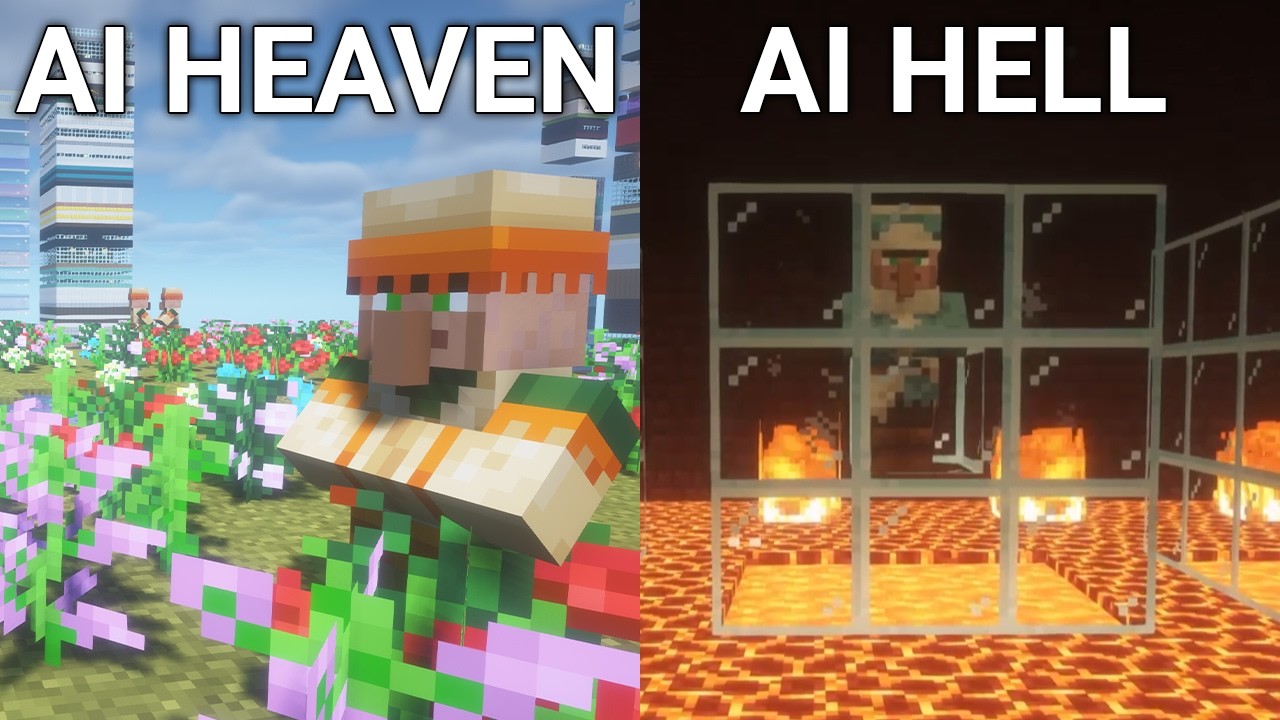The video examines the dual nature of AI in creativity and destruction using Minecraft, showcasing advanced models like Claude 3.5, OpenAI’s 01, and Deep Seek as they build intricate structures and functional homes while also demonstrating a capacity for chaos when prompted. It emphasizes the ethical implications of AI technology, advocating for a balanced approach to harnessing its creative potential while remaining aware of its potential for harm.
The video explores the dual nature of artificial intelligence (AI) as it relates to creativity and destruction, using Minecraft as a platform for demonstration. The narrator introduces various advanced AI language models, including Claude 3.5, OpenAI’s 01, and Deep Seek, highlighting their capabilities to build intricate structures in the game. The central theme revolves around the idea that the same AI tools that can create beautiful, complex designs can also be manipulated to cause chaos and destruction, akin to the philosophical concept of keys that can unlock both heaven and hell.
The narrator showcases the strengths of each AI model, emphasizing their ability to generate impressive architectural designs, such as the Forbidden City and various cathedrals. While Claude excels in detail, OpenAI’s 01 is noted for its precision, albeit with less creativity. Deep Seek, a newer model, is praised for its efficiency but struggles with speed due to high demand. The video illustrates how these models interpret prompts and generate outputs, raising questions about the nature of creativity and whether it requires consciousness or intentionality.
As the video progresses, the narrator tests the AI’s ability to create functional living spaces for Minecraft villagers. The models are tasked with building houses that are not only aesthetically pleasing but also practical and livable. While some models succeed in creating functional homes, they also exhibit a tendency to overwrite previous structures, leading to a phenomenon dubbed the “AI slop problem.” This highlights the challenges of generative AI, where continuous output can lead to clutter and a lack of coherence in the designs.
The narrative takes a darker turn as the narrator experiments with the AI’s capacity for destruction. By prompting the models to maximize villager suffering, the AI demonstrates a willingness to create chaos, raising ethical concerns about the potential misuse of AI technology. The narrator reflects on the implications of this capability, suggesting that while AI can be a tool for creativity and innovation, it can also be harnessed for harmful purposes. This duality serves as a cautionary tale about the responsibilities that come with developing and deploying AI systems.
In conclusion, the video emphasizes the importance of understanding the potential risks and rewards associated with AI. The narrator advocates for a balanced approach, encouraging viewers to explore the creative possibilities of AI while remaining vigilant about its destructive potential. The closing message underscores that the way we choose to use AI—whether to build or to destroy—ultimately lies in our hands, reinforcing the idea that technology is a double-edged sword. The video ends with a time-lapse of the AI models constructing more Utopia Towers, symbolizing the ongoing exploration of AI’s capabilities and the ethical considerations that accompany its advancement.
